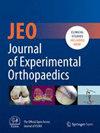Decellularisation of human meniscus tissue using sodium dodecyl sulphate (SDS): Preserving biomechanical integrity for scaffold-based meniscal repair
Abstract
Purpose
Meniscal tears are common knee injuries and a major risk factor for secondary osteoarthritis. Recently, there has been a paradigm shift toward meniscal preservation, reflecting the meniscus's vital role. In this context, tissue engineering approaches such as the development of meniscal scaffolds have gained attention. However, to reduce the immune response and improve biocompatibility, decellularization of allografts, while preserving the histoarchitectural and meniscal properties, is essential. The current study aimed to evaluate the effectiveness of decellularization and its impact on the biomechanical properties of the human meniscus.
Methods
Twenty-one human meniscus specimens were collected between July and December 2023 during total knee arthroplasty. Preoperative MRI was performed to verify meniscal integrity. The specimens were decellularized using a sodium dodecyl sulphate (SDS) protocol and compared to native meniscus samples in terms of cell count, assessed through hematoxylin and eosin staining, and biomechanical properties, specifically Young's modulus, measured using a universal testing machine (Zwick Z010).
Results
The cell count in the decellularized menisci was 11 cells/mm² (SD = 13; 95% CI: 2–20), representing a significant reduction compared to the native meniscus samples, which had a cell count of 111 cells/mm² (SD = 42; 95% CI: 81–141; p < 0.01). Young's modulus of elasticity was 35.3 versus 36.8 MPa in the anterior region (p = 0.8), 32.6 versus 35.6 MPa in the central region (p = 0.7) and 36.5 versus 35.8 MPa in the posterior region (p = 0.9) for native versus decellularized samples, respectively.
Conclusions
This study demonstrated that the modified SDS-based decellularization protocol effectively decellularizes the human meniscus. Moreover, the decellularized tissue retained biomechanical properties comparable to those of native meniscus tissue. Tissue decellularization is a promising technique in regenerative medicine, enabling the use of scaffolds for tissue repair, particularly in applications such as meniscus transplantation following meniscectomy.
Level of Evidence
Level III, controlled laboratory study.





 求助内容:
求助内容: 应助结果提醒方式:
应助结果提醒方式:


